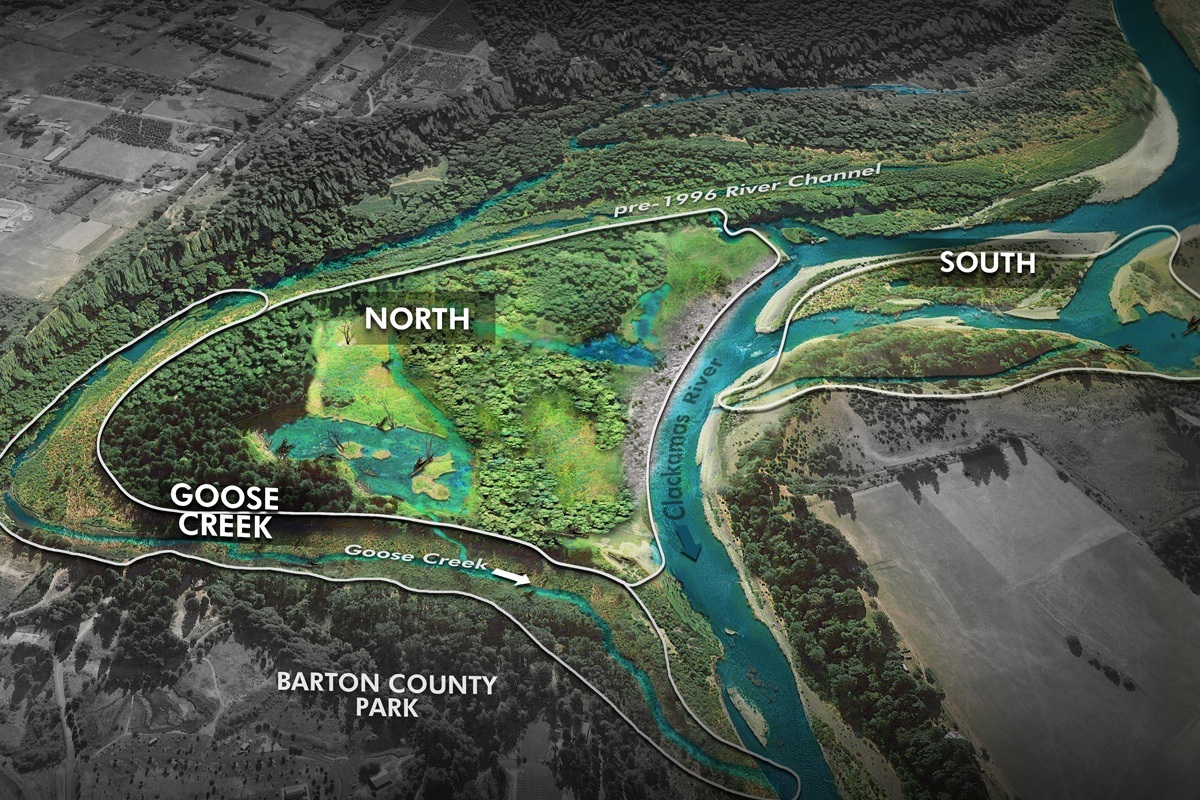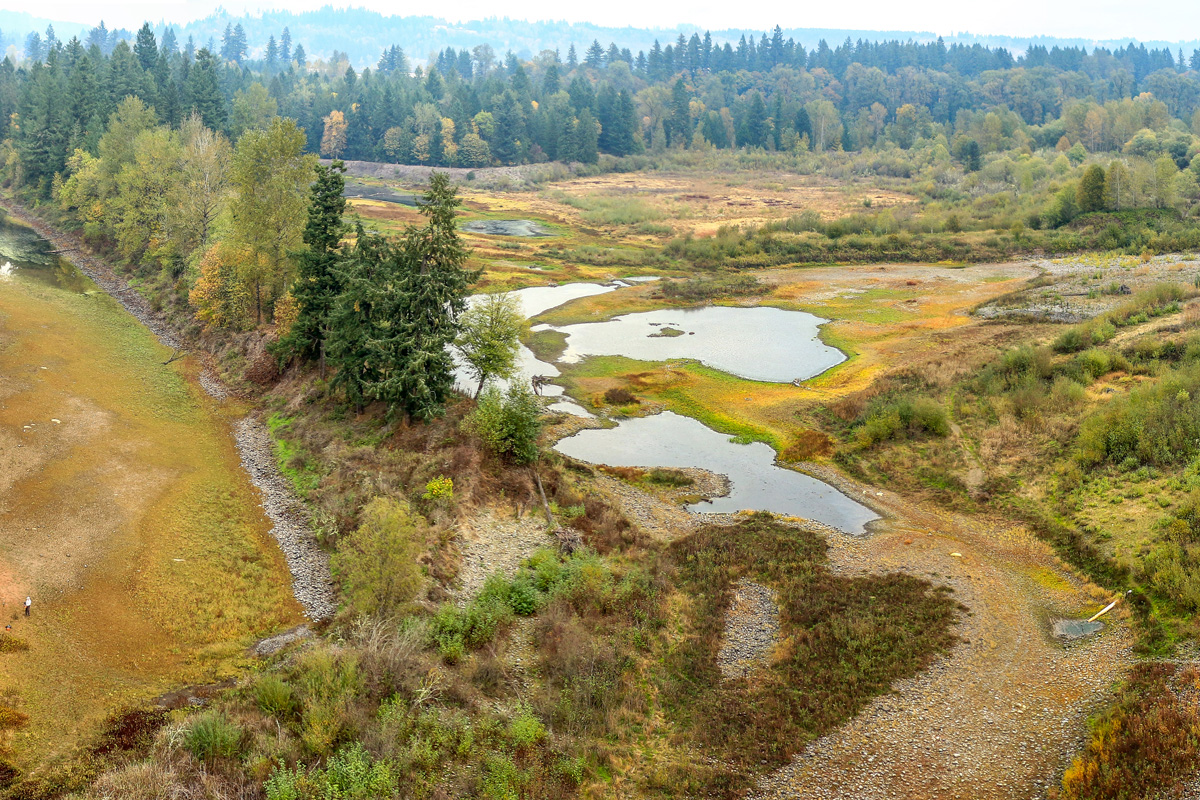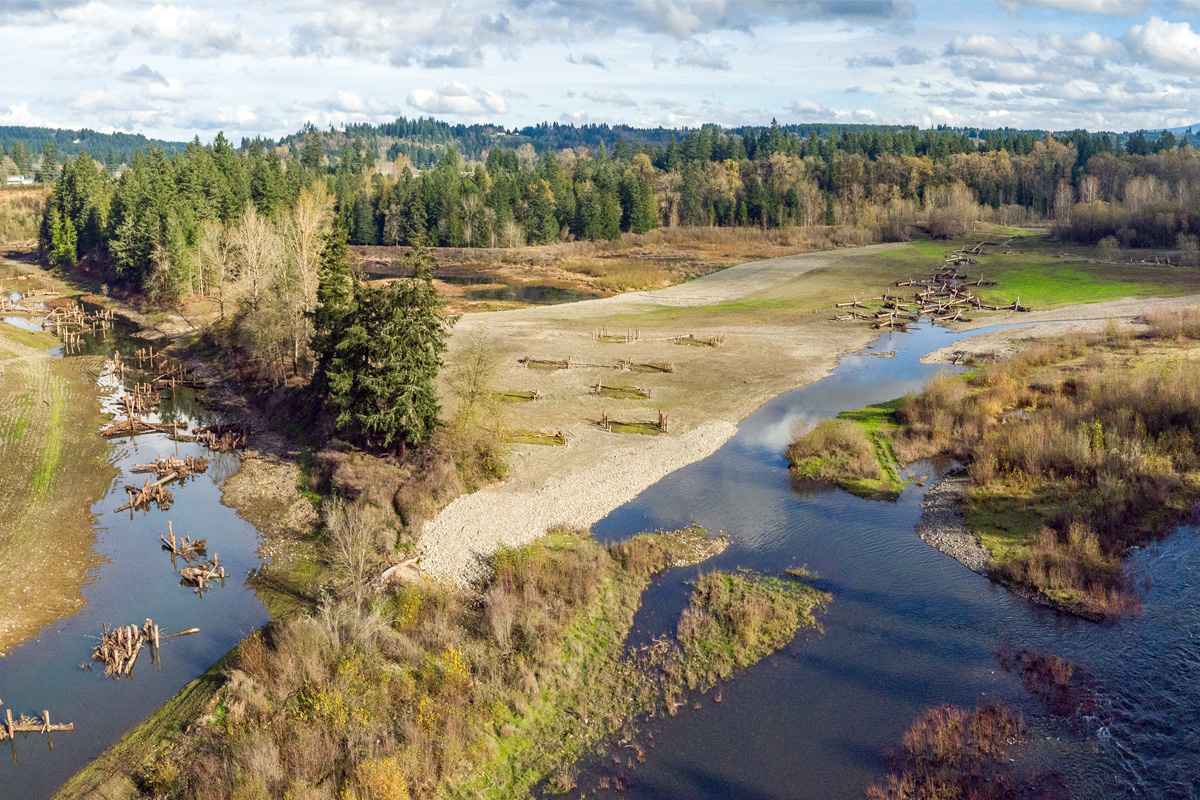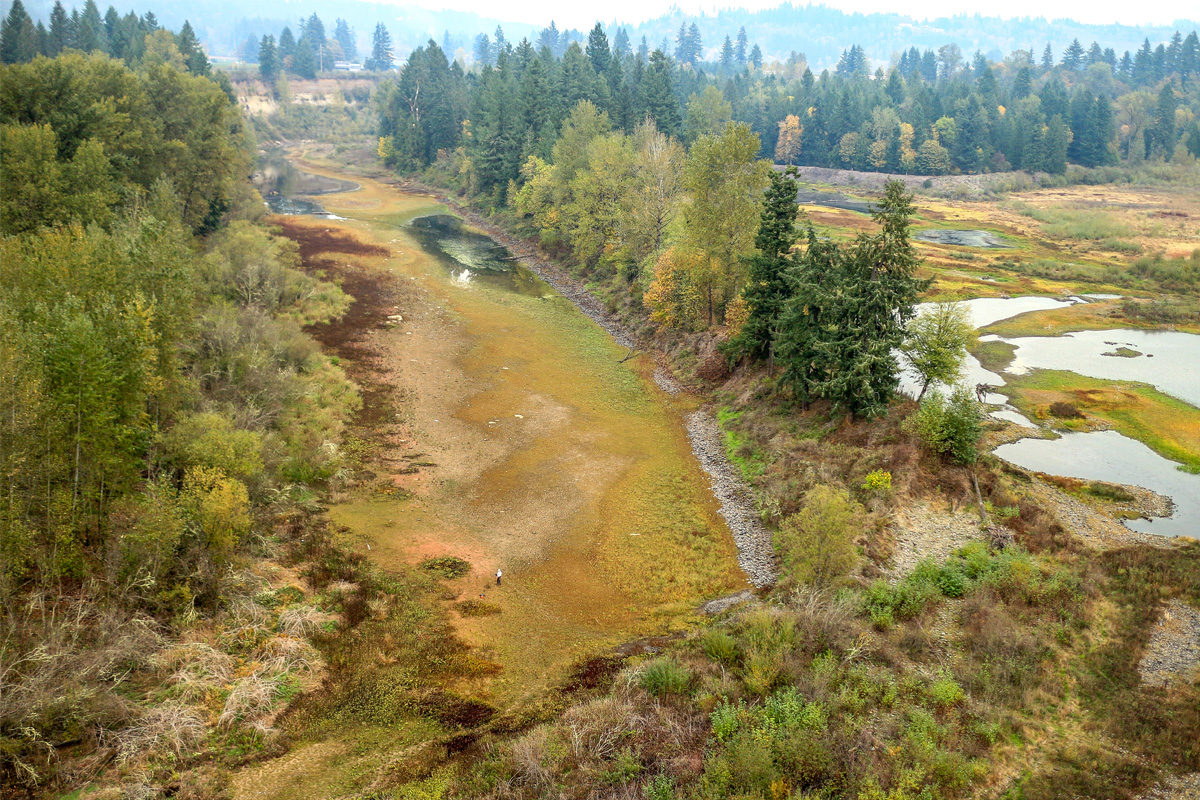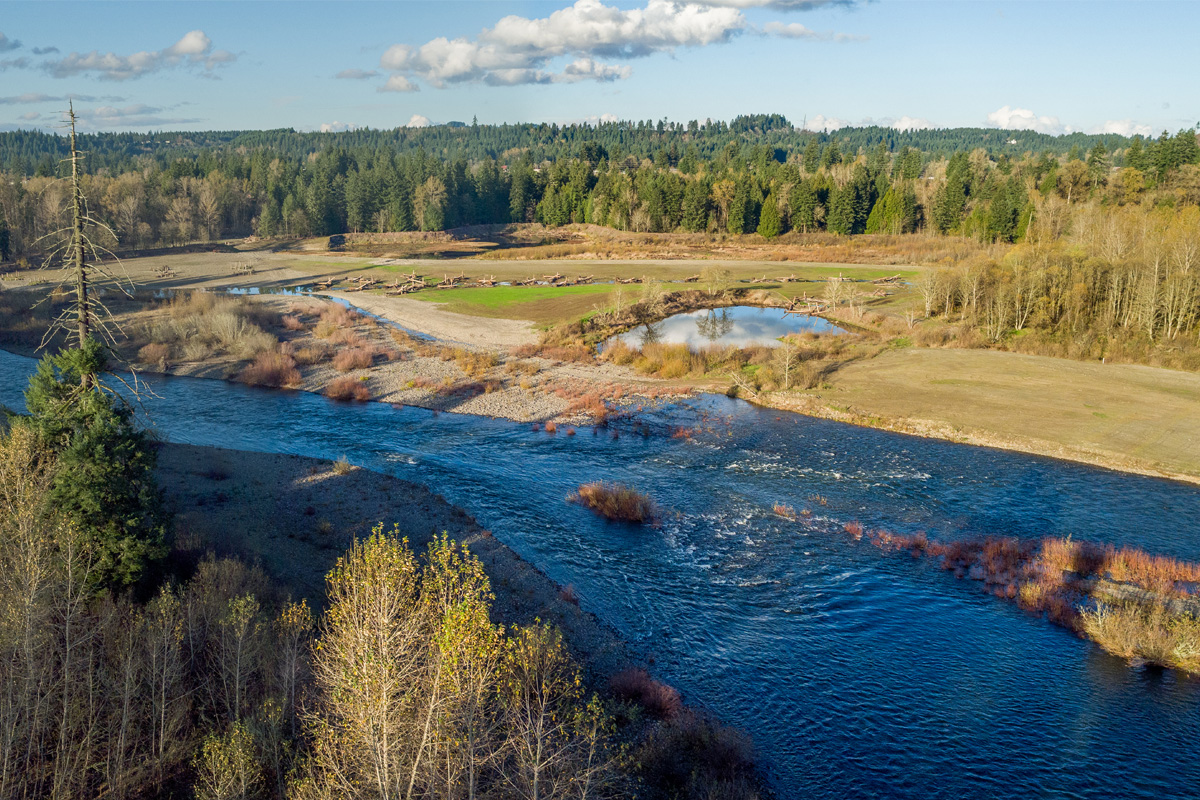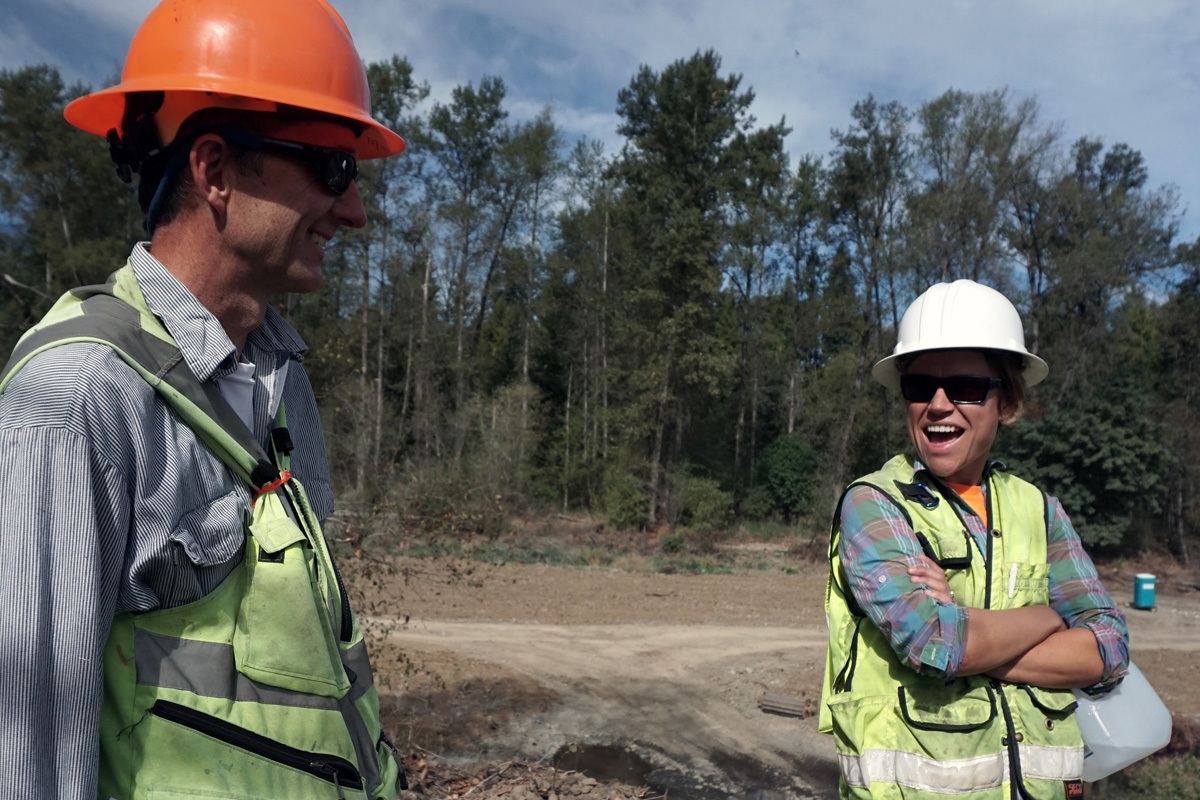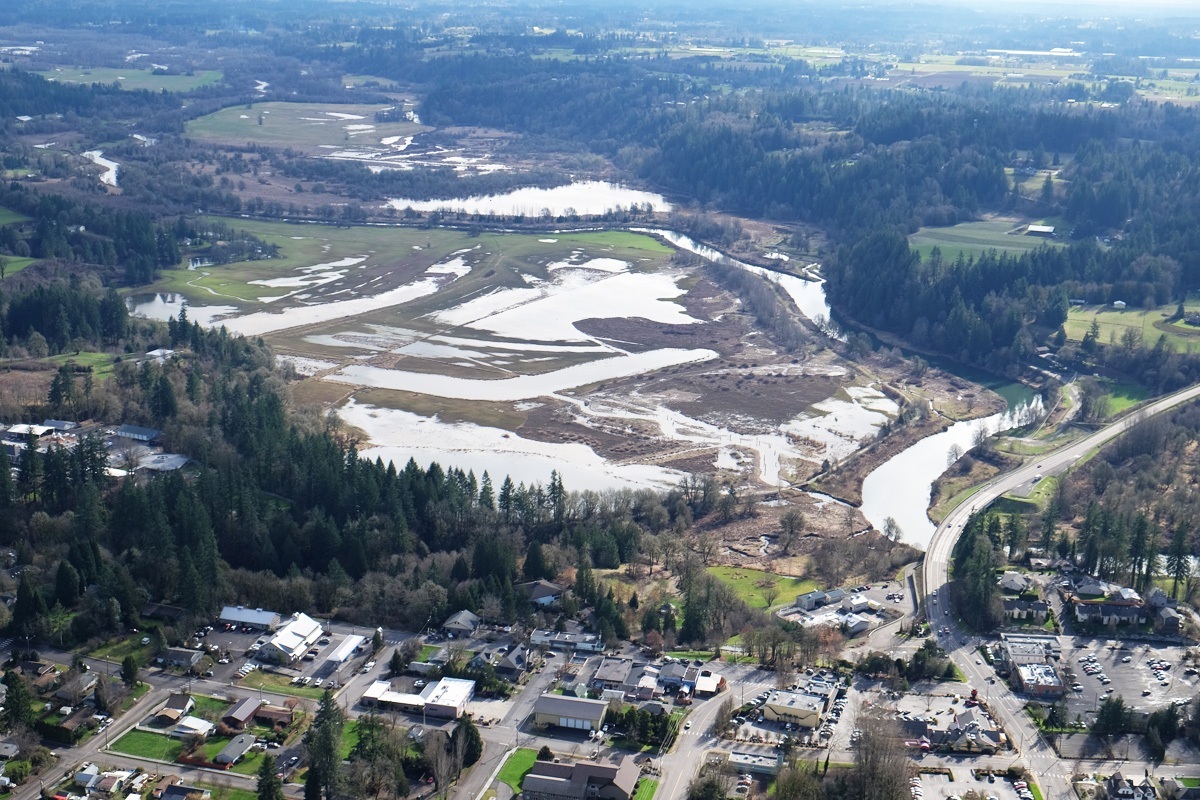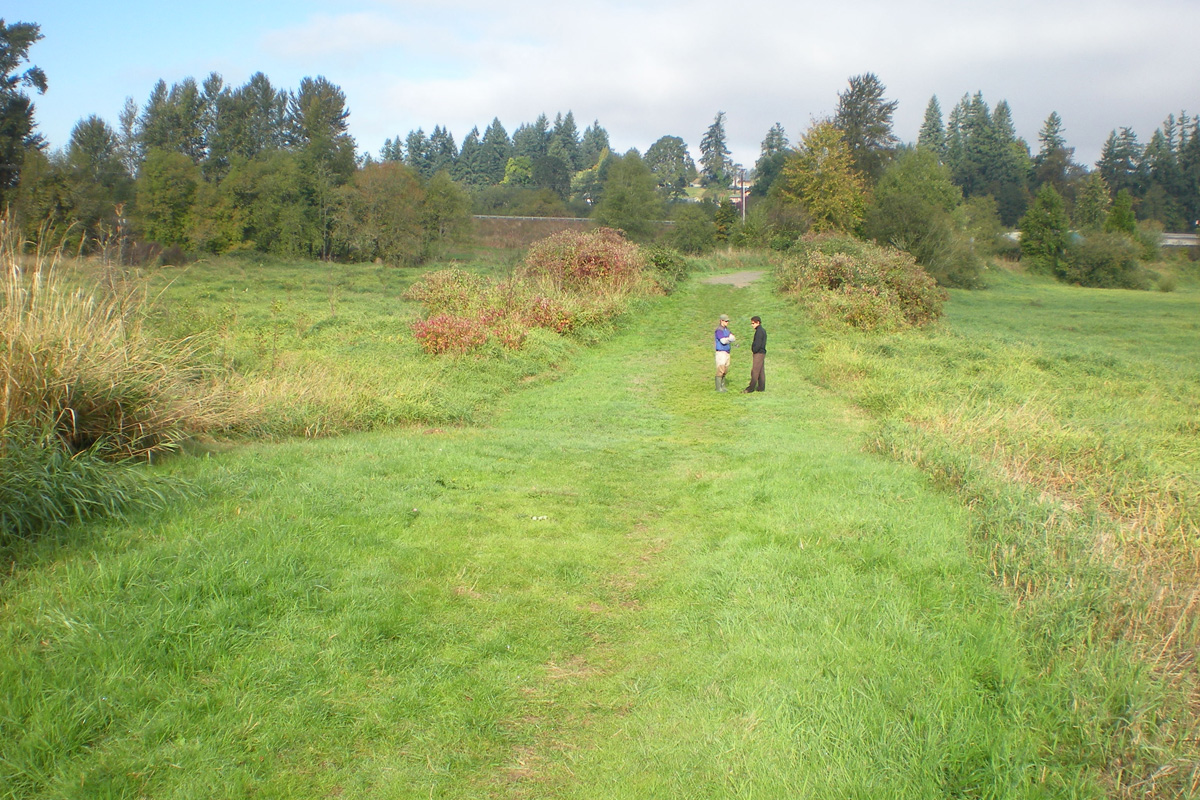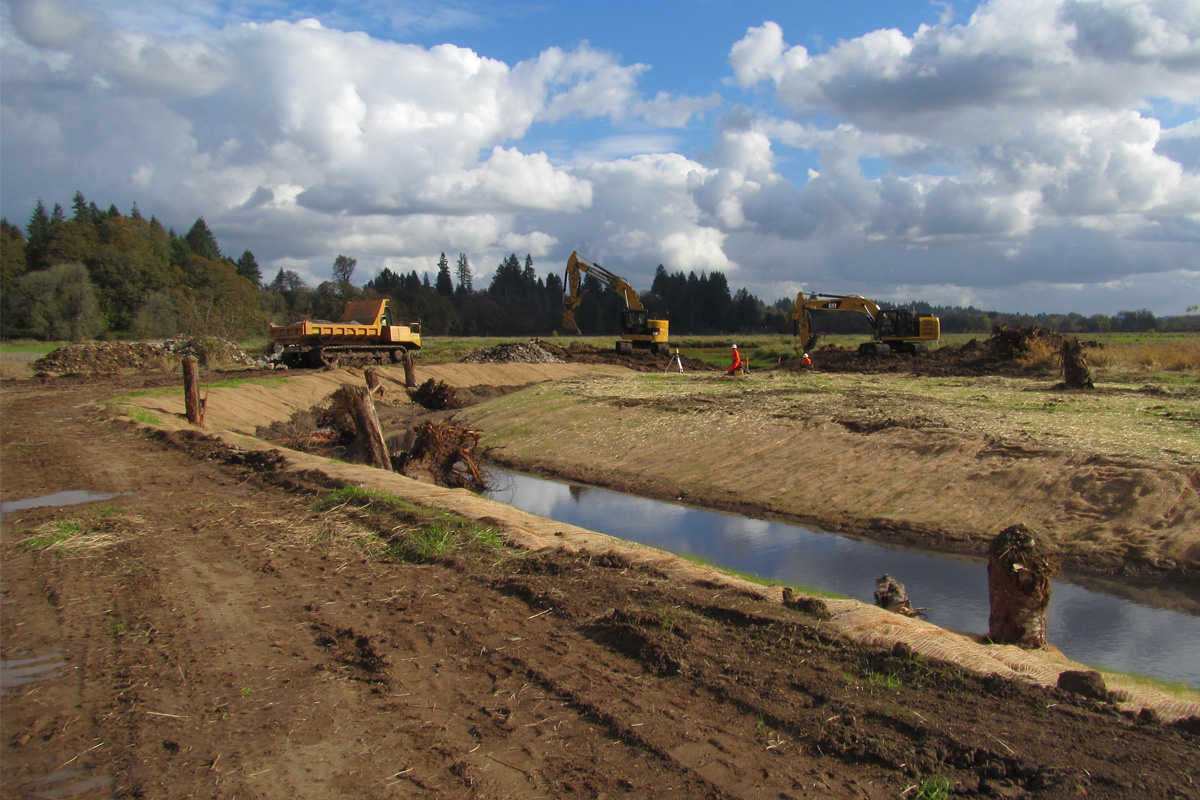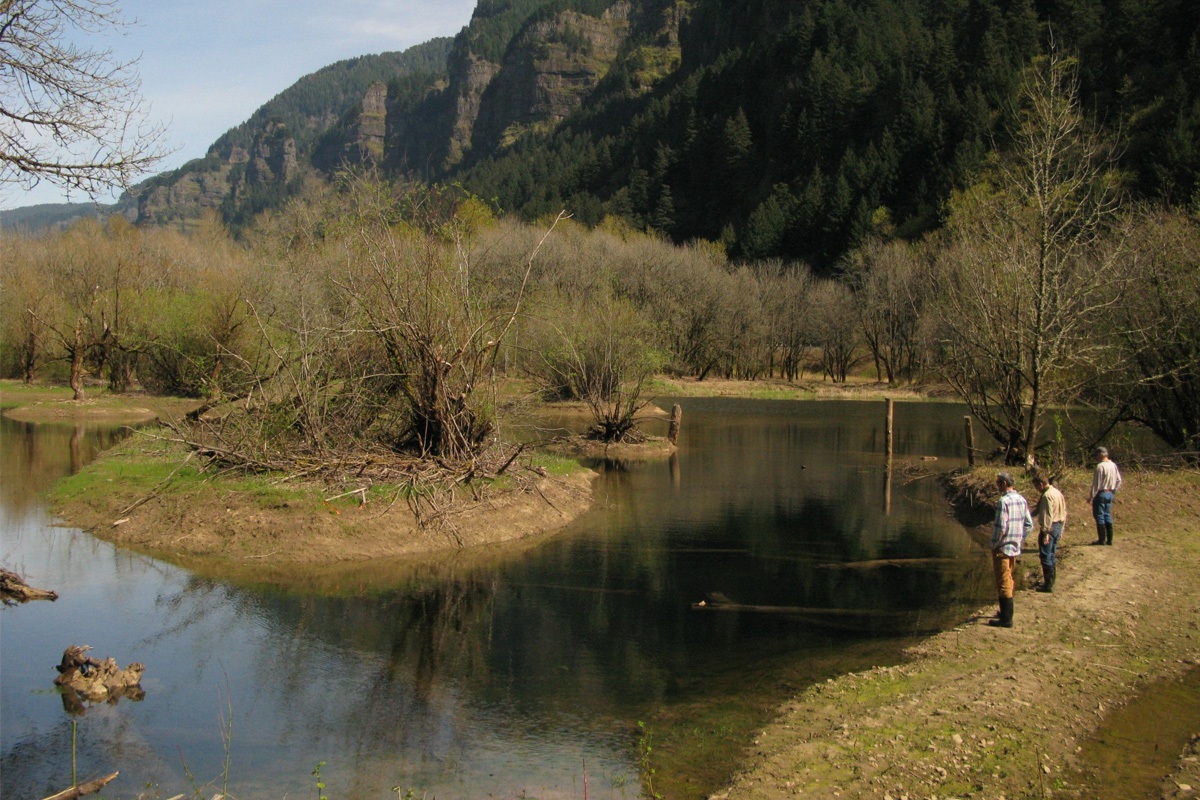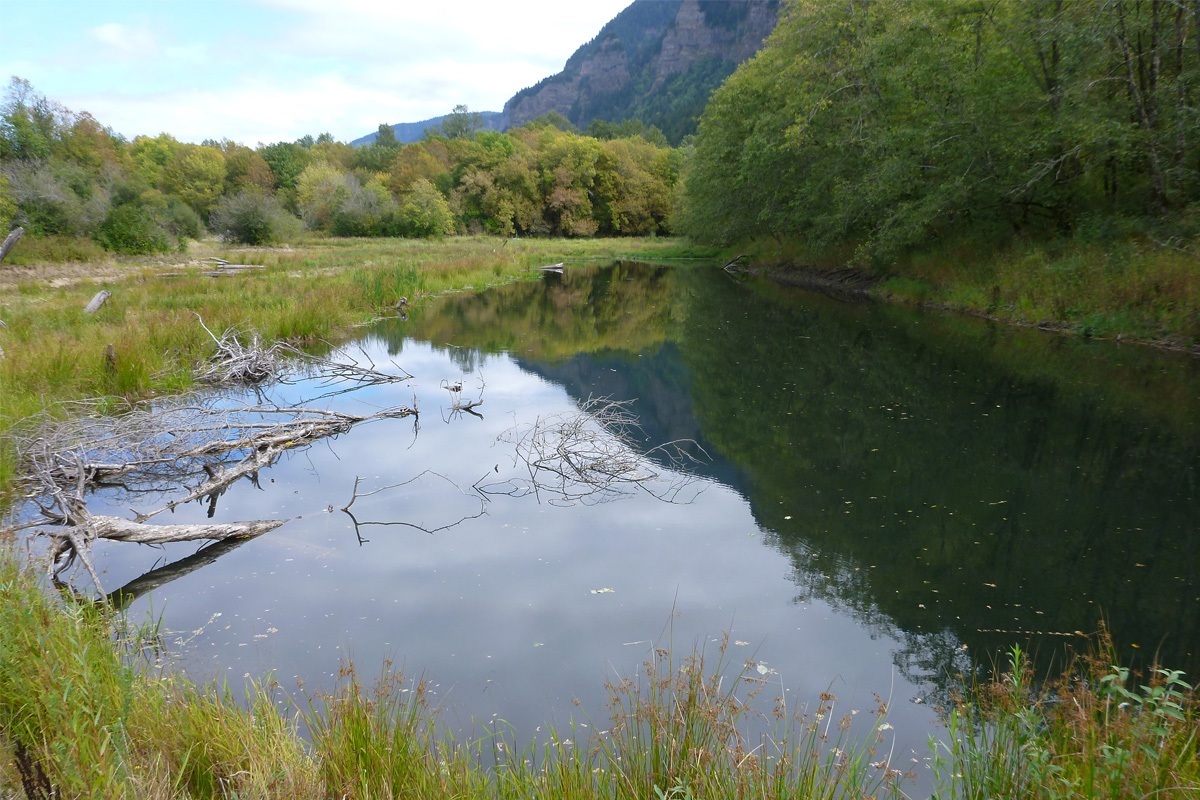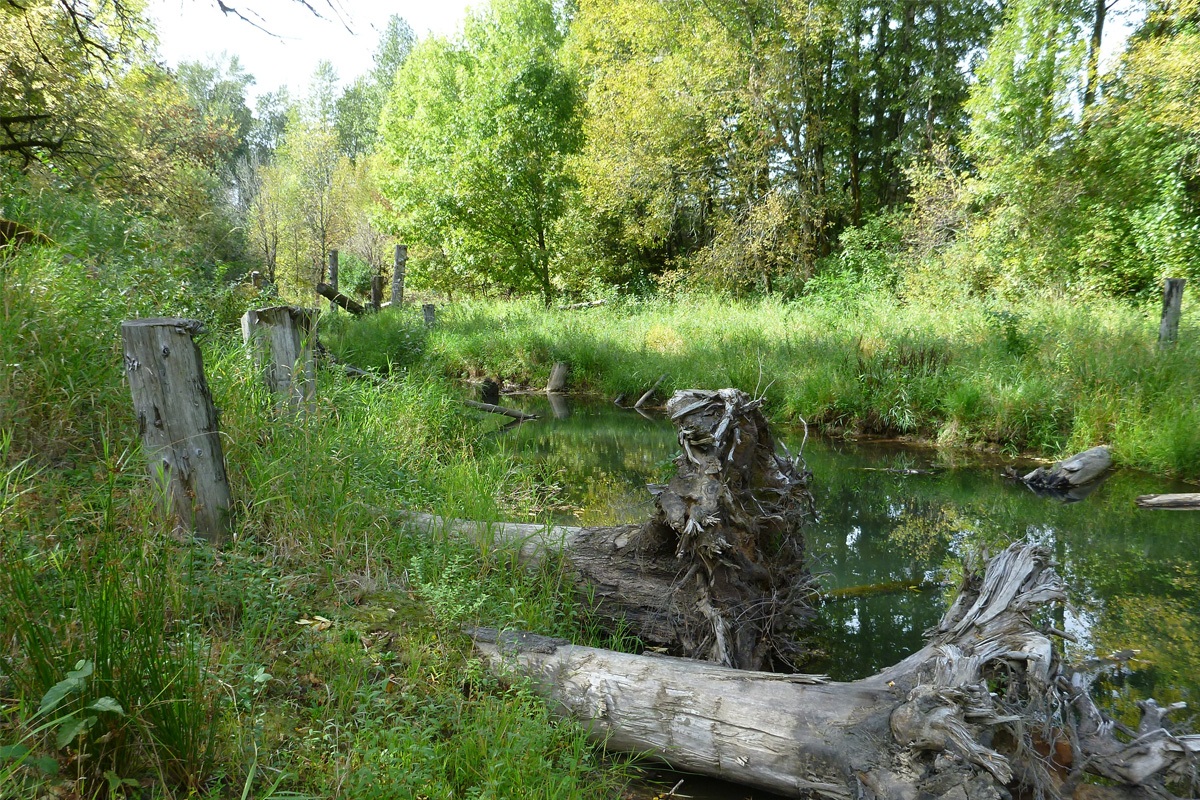River Island Channel
In 1996 a 100-year rain-on-snow flood event caused the mainstem Clackamas River to breach a levee and flow through this active gravel mining operation. Inter-Fluve developed design plans and oversaw construction for the property including rebuilding riparian-forested wetlands at the gravel mine site, and reconnecting Goose Creek – a Clackamas River tributary – to the Clackamas River mainstem to provide 3,500 feet of rearing habitat for juvenile salmonids. This $4 million project was completed in 2016.
La Center Wetlands
Inter-Fluve supported the Lower Columbia Estuary Partnership in identifying restoration opportunities, designing and constructing this large-scale floodplain reconnection project. Project design elements included breaching existing levees to reconnect surface water from the East Fork Lewis River to adjacent floodplains to enhance off-channel habitat for ESA-listed salmonids and native aquatic species. The project improved off-channel rearing and winter refugia for juvenile salmonids, removed two fish passage barriers, installed habitat large woody material, created riparian buffers, and naturalized a drainage canal. A roughened channel improved fish access to an existing wetland while still maintaining water levels within the wetlands. A 2D model was used to evaluate the impacts of project design elements, including on adjacent private and public landowners.
Horsetail Creek
Located on the Columbia River floodplain, the 180-acre Horsetail Creek project area was dramatically impacted by construction of Interstate 1-84 and resulting diversions of the creek, as well as a pea gravel mine. Despite this legacy of disturbance, intact portions of Horsetail and Oneonta Creeks were still providing key rearing habitat for local and out-migrating upriver mainstem populations of ESA-listed salmon and steelhead.
Inter-Fluve assisted the Lower Columbia Estuary Partnership in a baseline assessment, fish passage evaluation, habitat and fish passage restoration feasibility study, conceptual and detailed restoration design, development of construction documents, and assistance through project solicitation and implementation. The project was constructed 2013 with aid of a Chinook helicopter for transporting and placing large wood.
Portland General Electric (PGE) and Inter-Fluve received an American Council of Engineering Companies (ACEC) Engineering Excellence Honor Award in spring 2016 for the project.
